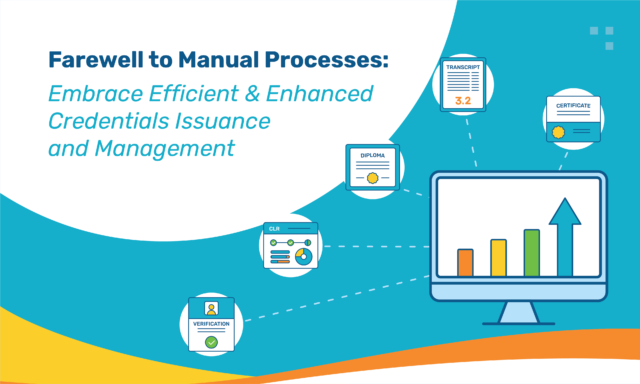Inside Higher Ed reports that the number of higher education institutions has been steadily declining, with active four-year universities decreasing by 2.3% and community colleges dropping 2.7% in the 2020-2021 academic year.
The decline in higher education institutions stems from mergers, consolidations, and closures. Forbes reports that a reduction in enrollment, a decrease in revenue, and a shifting higher education market have increased academic institution mergers. Furthermore, multiple institutions are consolidating to create singular facilities. A prime example of this is Pennsylvania combining six of its state-owned universities into two institutions, according to Higher Ed Dive. Finally, education facilities that can no longer support their mission, students, or faculty are being forced to shut down completely.
One of the most critical elements in navigating a smooth school closure is ensuring alumni transcripts remain accessible and safe. Unfortunately, many schools wait too long to implement a plan to support record management. By taking the right steps to put proper processes in place, custodians and accreditation commissions can ensure all records are secure and accounted for once the school officially closes its doors.
Determine who will be responsible for alumni records
When navigating a school shut down, it’s best to create an organized process for storing and maintaining transcripts post closure. The first priority is selecting a closed school records service that can manage alumni record fulfillment and storage. You’ll want to work with the agency to determine how and where the records will be stored and accessed.
Key questions to ask your new records-keeping partner include:
- Will they be placed in various locations, which could delay responses to transcript requests?
- Will the records be kept in fire-proof areas to ensure safety?
- Will alumni have access to digital copies of their records?
Once answered, your team can move on to establish a procedure for alumni to obtain their records.
Establish a transcript request procedure
Partnering with your records management provider, you’ll want to create a detailed process for alumni seeking to access learner documents. For example, you need to establish a procedure for gathering and issuing orders, including collecting funds to process requests.
Additionally, you’ll want to ensure there are processes in place to cover all possible scenarios — such as when a record cannot be located and supporting transcript requests for individuals with older documents (like microfilm, fiche, or paper records).
Prepare to notify the public
Once you’ve implemented a procedure for supporting alumni records, it’s time to develop a plan for notifying the public. By prepping early, you can ensure your school can mitigate transcript questions and make your alumni feel secure knowing their records are safe despite the school no longer being in operation.
To prevent confusion and panic, it’s best to provide as much information to your alumni as possible. Let them know where the transcripts will be stored and how the new agency will ensure safety and security. Provide instructions on how alumni can obtain documents, being mindful to include any costs alumni may incur throughout the process.
It’s also a good idea to prepare an FAQ that answers questions to reduce the number of calls and emails your office receives following the closure announcement. Common concerns alumni may have include:
- Where are the records being held?
- What format are documents being stored in?
- How long should alumni expect it to take to receive requested records?
- How much will record processing cost alumni?
Once notification plans are in place, you can coordinate with school officials to release a formal announcement.
Parchment secures record processing after a school closure
At Parchment, we partner with higher education institutions to store alumni records and ensure students can continue to access learner records. Our end-to-end Registrar Service stores, manages, and supports alumni documents, empowering institutions to streamline transcript requests. All schools receive a designated representative to ensure timely and secure alumni transcript processing and deliveries.
Take action to continue to support students after a school has closed.
Learn more about Parchment’s Closed School Records Services by completing the form below now.
There’s always more to learn.




